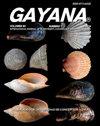智利Rayador (Rynchops niger)的种群状况
IF 0.2
4区 生物学
Q4 ZOOLOGY
引用次数: 1
摘要
黑掠食鸟(Rynchops niger)在南部夏季造访智利海岸,主要在沿海湿地观察到大小不一的鱼群。通过联合使用公民科学观察数据库和我们的长期监测,我们估计智利物种的种群规模达到10227只。三个地点聚集了超过50%的人口,这些地点是Mataquito和Itata河的河口,以及Tubul。对四个地理大区域全年相对丰度的分析将反映智利海岸上物种的移动情况。随着个体的到来,北部地区在11月出现了一个丰度高峰,但它们的回归策略一直不那么明确。该国的中北部和中部地区显示了个人到达和离开的两个高峰,表明相当的过境使用。除了个体的最高集中外,2月份还存在一个单一的高峰,这表明该国中南部和南部地区可能是大部分黑撇脂鸟种群的目的地。对个体的无线电遥测监测允许检测个体在沿海湿地网络之间的运动。这种迁移在整个季节经常发生,无论向北还是向南。这项研究为该物种在智利的状况提供了相关信息,智利在非繁殖期是潜在重要比例的cinerascens亚种的栖息地。本文章由计算机程序翻译,如有差异,请以英文原文为准。
Estado de las poblaciones del Rayador (Rynchops niger) en Chile
Black skimmers (Rynchops niger) visit the coast of Chile during the Southern summer, being observed in flocks of different sizes, mainly in coastal wetlands. Through the joint use of a database of citizen science observations together with our long-term monitoring, we estimate that the population size for the species in Chile reaches 10,227 individuals. Three sites congregate more than 50% of the population, these sites are the estuaries of Mataquito and Itata river, and Tubul. The analysis of the relative abundance throughout the year for four geographic macrozones would reflect the movement of the species on the coasts of Chile. The Northern zone shows an abundance peak in November with the arrival of individuals, yet its return strategy keeps not being so clear. The Central-North and Central zones of the country show two peaks in the arrival and departure of individuals, suggesting a rather transit use. The existence of a single peak in February, in addition to the highest concentrations of individuals, would indicate that the Central-Southern and Southern areas of the country would potentially be the destination for a large part of the population of black skimmers. The radiotelemetry monitoring of individuals allowed the detection of movement of individuals between a network of coastal wetlands. These displacements would occur frequently throughout the season and both north and southbound. This study provides relevant information for the status of the species in Chile, a country that is habitat for a potentially significant proportion of the cinerascens subspecies during the non-breeding period.
求助全文
通过发布文献求助,成功后即可免费获取论文全文。
去求助
来源期刊

GAYANA
Agricultural and Biological Sciences-Aquatic Science
CiteScore
0.60
自引率
0.00%
发文量
5
期刊介绍:
GAYANA is a scientific journal published by Universidad de Concepción, Chile. It is the modern version of Gayana Oceanología and Gayana Zoología. Therefore its numeration starts at volume 63(1).
GAYANA covers all aspects of zoology and oceanographic research. It is structured in five sections, defined by subject or discipline: Ecology, Biodiversity and Taxonomy, Earth Sciences, Evolutionary, and Applied Biology and Environmental Biology. Each section is in charge of an editor who receives and manages the manuscripts sent for evaluation in close collaboration with the editorial board.
 求助内容:
求助内容: 应助结果提醒方式:
应助结果提醒方式:


